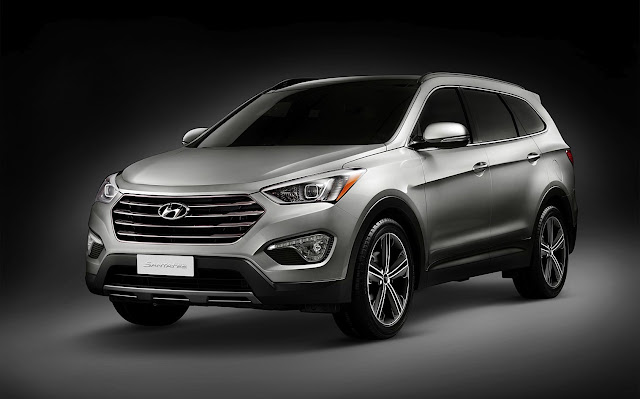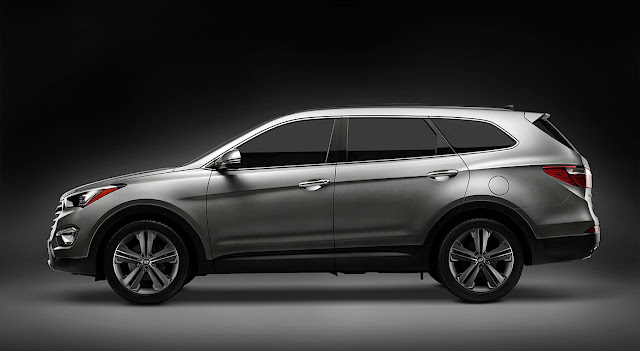The 2013 Hyundai Santa Fe has an opening individuality, but it's by choice. Faced with the boom in small crossovers and the reputation of the seven-passenger Santa Fe until it was dropped in 2009, Hyundai's shut down its Veracruz nameplate, and prolonged the Santa Fe brand to comprise two body styles the two-row Santa Fe Sport, and the three-row Santa Fe.
Between these two models, the Santa Fe cuts across an enormous swath of CUVs and mini-utes, all from the smaller Ford Escape and Honda CR-V, through the bigger five-passenger crossovers similar to the Ford Edge and Toyota Venza and Chevy Equinox. With the superior model, which is 8.5 inches longer than the sport, with a wheelbase about four inches longer, the Santa Fe schedule will spread all the way into the three-row realm where vehicles like the Dodge Journey, Kia Sorento, and particularly, the Pilot, Highlander, and voyager claim the vast chunk of sales.
Hyundai's betting that new styling, better performance, and a more elastic interior will vault the Santa Fe into the top tier of those ranks. It's easy to see how its seem will go far. The Santa Fe's a grown-up from the outside alone, and its new two-tone interior makes for one complicated crossover. The sharp edges and tight creases enfold around it in appealing new ways, and Hyundai's hexagonal lattice gets its best behavior thus far here, bracketed by headlamps and vapor lamps. The D-pillar's upkick and posture repeat us a little of the Escape, but the Santa Fe Sport's shape is further faceted and studied than the Ford's, no extra or less handsome.
The two-row Santa Fe Sport is offered with both a logically aspirated 2.4-liter four-cylinder engine construct 190 horsepower, and a 2.0-liter turbo four-cylinder generate 264 horsepower. The three-row Santa Fe replica is powered by a 3.3-liter V-6 producing 290 horsepower the identical smooth new engine used in the Azera. All three engines characteristic direct-injection technology and six-speed automatic transmissions for improved fuel saving and more power.
The Santa Fe's front seats are a step up from the most current Hyundai vintage, with better sustain built into the bottom cushion. But the second row is anywhere the action is: on some models, the second row slides on a 5.2-inch track for better elasticity, in the same method the seat in the Chevy Equinox moves. The seat also lounge and folds on a 40/20/40 split, manufacture way for longer objects while conserve four seating positions.





No comments:
Post a Comment